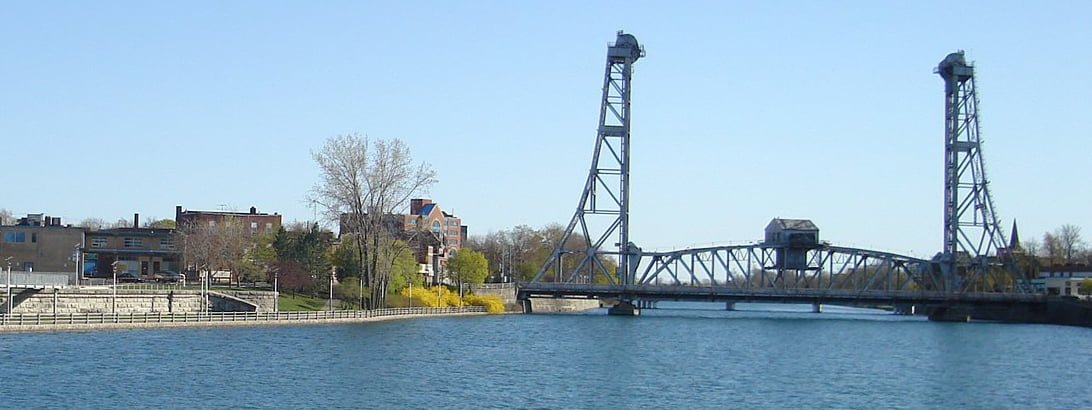
Swelling house prices have been a bonanza for Niagara homeowners.
In recent months, home values — which have lagged behind the GTA’s red-hot rise — have gained serious traction.
A recent Royal LePage House Price Survey spotlights this, with a report that the aggregate price of a home in the region over the latest quarter rose 7.2 per cent, year over year to $289,298.
But — at least in St. Catharines — that steady price escalation may have a big downside.
Another Huffington Post survey released this week crunches bank surveys to rank Canada’s best cities for jobs and affordable homes.
Of all places surveyed, the Garden City ranked the very worst at 21.5 per cent on the index.
The measure calculates the jobs and housing price balance using data from Bank of Montreal’s Labour Market Report Card and home-affordability indexes from Royal Bank of Canada and Caisse Desjardins.
It cited a jobless rate of eight per cent compared to six per cent a year ago.
The survey adds St. Catharines house prices soared “thanks to its proximity to Toronto, but the city’s rust-belt economy isn’t creating many jobs.”
“It’s the worst of all worlds.”
Mishka Balsom, CEO of Greater Niagara Chamber of Commerce, suggests several factors are at play here.
“An article like this has an impact on our image and reputation, there’s no question,” Balsom says. “Then the question is, does it really have a practical impact? … I think there’s a lesser degree to that.”
Still, the Huffington piece notes housing prices are rising faster than wages or employment increases, she says.
“So this real-estate boom hasn’t been matched by an economic boom at the same time,” Balsom says. “And that’s really what the article points out.”
Meanwhile — in a trend noted by other realtors — homeowners in pricier GTA markets are eyeing St. Catharines and Niagara as having more bang for their buck.
Balsom notes St. Catharines has limited available land for more housing development.
Flowing through this in an under-investment in new affordable housing in Niagara, she says. Residential developments regionally are typically skewed to the medium and higher end, but not to more affordable units.
“Here we have a situation where real estate is being bought up by people from outside Niagara … no more jobs have been created, unemployment has been pretty steady,” Balsom says.
“And that’s what has created this gap we’re seeing.”
She adds the forecast for area unemployment is about seven per cent. The City of St. Catharines website cites a most-recent statistic of 7.6 per cent as the unadjusted unemployment rate for April. That also represents a mostly steady rate decline since mid-2009, when it topped at 10.4 per cent.
In general, creating “good-paying jobs and raising incomes” remains an important challenge for region, Balsom says, adding there are other opportunities for St. Catharines and Niagara highlighted by the study.
Among them is to intensify housing development in other areas that can support it.
To that end, more affordable housing should also be part of that strategy, she says.
Some movement is happening to help chip away a Niagara Regional Housing waiting list that fluctuates between 4,400 and 4,600 households.
Last month, it was announced a new affordable housing complex with up to 88 units would be built in St. Catharines on a lot at Carlton Street.
Poverty advocates say the deficit remains huge.
One of them echoes Balsom’s concern about the need to ramp up affordable housing.
“The (housing) inventory is not being increased at that lower end the way it should be,” says Glen Walker, chair of Niagara Region Poverty Reduction Network. To that end, Walker would like to see municipalities, when reviewing their bylaws, explore ways to include new affordable units when granting permits for subdivisions.
Rising rents are also stressing many out in lower income brackets, Walker says.
“It has really got people spending a significant amount of their income on rent. That’s giving them much less to get by with.”
With higher rents, “available units are certainly not perhaps at the calibre you’d want in a community,” he adds.
St. Catharines Mayor Walter Sendzik was away and unavailable for comment Thursday.
“It’s a simplistic approach using the work of others to develop a top-10 list,” says city economic development manager Brian York, also pointing to significant positive economic developments and investments in the area.
York adds the challenge in any data analysis is its use of “St. Catharines-Niagara census metropolitan area” numbers. That CMA includes the entire region except for West Lincoln and Grimsby.
“It’s a regional economy approach and not St. Catharines-specific,” he says. “That CMA doesn’t define us by municipality … it’s a frustration point and one we’ll address with our federal partners so we get accurate data on our economy.”
Royal LePage House Price Survey for the second quarter of 2016
The aggregate price of a home in Niagara rose 7.2 per cent year-over-year to $260,029. The aggregate price is a weighted average of the median value of homes for property types in the area surveyed.
For the region, the median price of a two-storey house jumped 10.6 per cent to $315,777 and for bungalows it was up 2.9 per cent to $260,029.
Brad Johnstone, broker of record at Royal LePage Niagara Real Estate Centre, notes a number of factors affecting the local housing price jump.
Inventory is low, with listings seeing reduced days on the market. In June the average home in St. Catharines is now on the market for just under a month.
Retirees and former Niagara residents are moving back to the area from the high-priced GTA.
First-time home buyers are also attracted to GO Transit expansion plans in Niagara and its promised future reduction of the Toronto commute.
Johnstone had also seen the Huffington study and commented on the LePage survey, which reflects an average of the median value of various homes in the area.
“We’re seeing investment from all over the world to Niagara,” he says. “Yes, we’ve seen double-digit growth (in local housing prices), but we haven’t had double-digit growth like most of the GTA has.”
In his view, Huffington Post is taking “general stats and applying them.”
“Every person we talk to that moves to Niagara still sees it as great value,” he said.
As far as jobs, he notes recent job-investment announcements, including a forthcoming General Electric plant in Welland that will create 150 jobs.
“Everyone I am talking to … they’re all looking at Niagara as the next place to be,” Johnstone says.
“Maybe it’s not all here yet, but it’s coming.”
Huffington Post ranking: Canada’s best cities for jobs and affordable homes
donfraser@postmedia.com
Twitter: @don_standard
Original article: http://www.stcatharinesstandard.ca/2016/07/14/study-shows-dark-side-in-st-catharines-price-rise









